Italy 2022
This trip in September/October of 2022 was to the two largest islands that belong to Italy - Sardinia and Sicily. They are both home to fascinating archaeological sites, phenomenal food, and incredible wine.
We started out in Sardinia. It’s a bit tricky to get there. We flew direct from JFK to Milan Malpensa. Then we took a van transfer from Malpensa to Milan Linate. Then we had a brief, one hour ten minute flight from Milan Linate to Cagliari (pronounced Cal-yar-ee,) It’s a lovely city with a deep history, and is a great entrance point to the island.
Calgiari
This is the largest city on Sardinia and the capitol. It is nestled in between the mountains and the sea. It is the home to the largest fish market in Europe, and has deep historical roots. It’s an absolute must-see if you come into Sardinia.







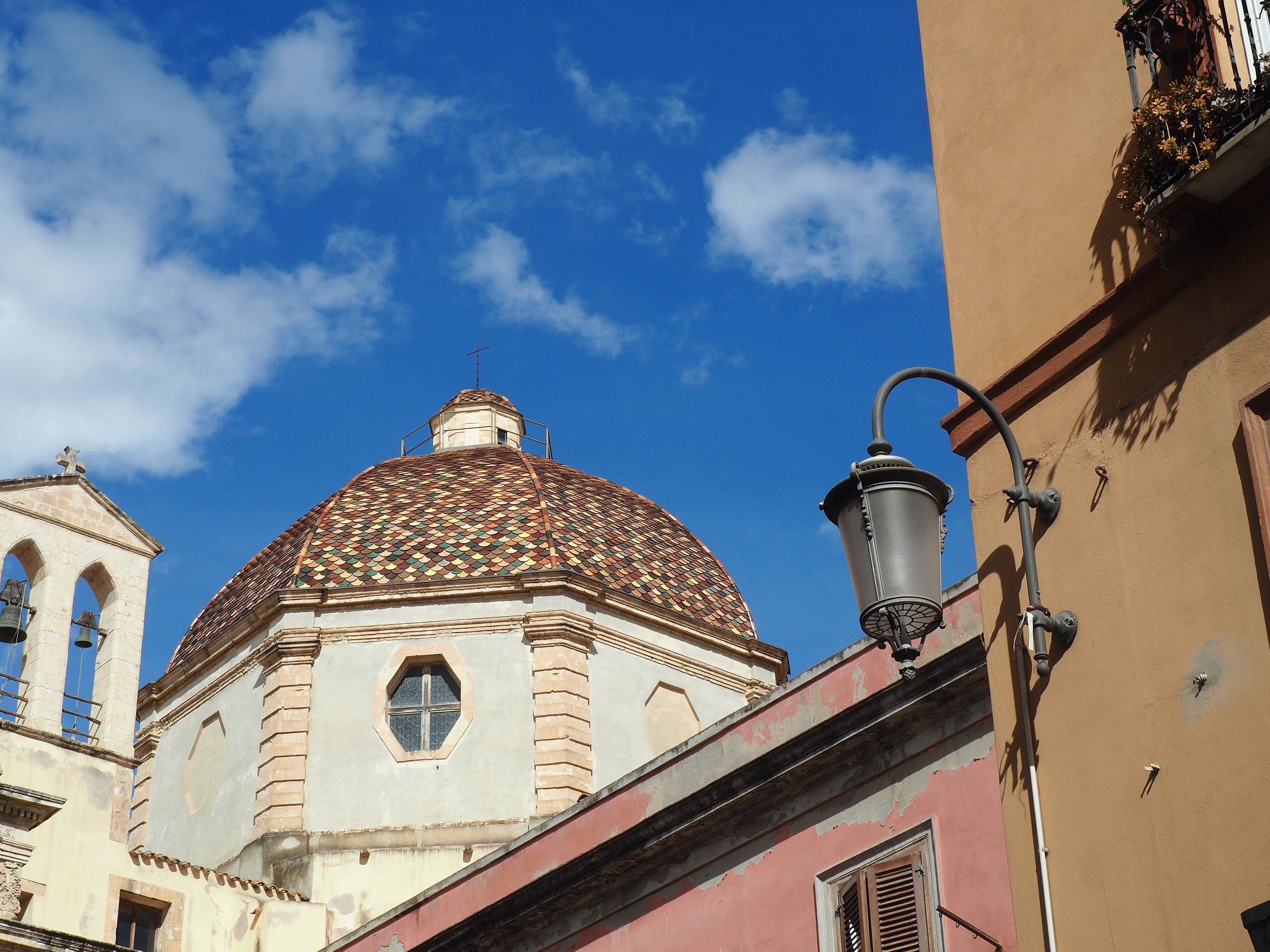






Calgiari really is an impressive city. It can date its history back to the Phoenicians, with a Phoenician spring still visible in the botanical garden. There is a lot of the history of the city below the modern buildings. We were able to see the old Roman streets below the Church of Sant Eulalia. There are some really impressive churches with some really impressive art and architecture. There’s also some wonderfully gothic sections.
The Roman city was quite extensive. There is a very impressive amphitheater that is visible heading up to the Castel section. The city itself has a two main sections - the Castel which is up on a promontory overlooking the lower city, and the harbor which leads down to the port. The archaeological museum is up in the Castel and is a must- see since it houses some of the amazing giants and bronze figures that were such an important part of Nuragic civilization.
Cagliari is also a great place to start your exploration of Sardinia. It was a Phoenician port and then a Roman city, but then was important throughout the tumultuous history of Sardinia. For a brief overview - Sardinia, after the fall of the western Roman empire, was briefly conquered by the Vandals. After the Vandals left, the island came under control of the Byzantine empire (so I guess briefly Roman again.) They never came under strong Moorish control (unlike Sicily), but instead ended up under Spanish (Aragonese) control, until they were handed over to the Savoy lords of modern France. Interestingly, it was this Savoy kingdom of Sardinia and Corsica, that gave rise to the first king of a united Italy. So in many ways, modern Italy wouldn’t exist without the kingdom of Sardinia. It is currently considered an independent state in Italy, but is in many ways different from the rest of Italy. They have their own dialect, which has a lot of Spanish influence and can at times sound a bit like Catalan.
Cagliari has been a major capitol throughout the history of Sardinia. So it’s an excellent place to start your exploration of the island. Oh, and in the waters near Cagliari, there are flamingos. Actual, pink flamingos. I’ve not been able to find any explanation for why they are there (they aren’t in the north or on Sicily, so why there are these flocks of flamingos everywhere in the south of the island seems like a mystery to me,) but they are really amazing to see.












Trips and Tricks
Cagliari is truly worth a visit. We went on a walking tour and were able to see so much of the city. We started by the Caffe Antico (a great place to grab breakfast) and walked down to the Marina. On the way, we visited multiple churches and got to see some of the city under the city. Then it was up past the Roman Amphitheater and finishing up at the Castel.
The best places to visit are mostly churches. Check out the Church of Sant Eulalia to see the remains of the Roman city and the Duomo of Cagliari for some amazing architecture as well as some of the most purely Goth decoration I’ve ever seen. The Botanical Garden is lovely and also has some incredible archaeology, including the remains of the Phoenician spring and cistern.
We stayed at IAmoCagliari - a lovely little hotel right near the base of the Castel. It’s super convenient to get into the city while also being quiet at night. Very friendly owner and the rooms were comfortable and very clean.
For restaurants, we went to two for dinner. Both were recommended by our host and they were excellent. The first was Sa Piola, a very small but exquisite restaurant that is near the Piazza Yenne. We went early (for Italy) but on a weekday night, it was packed. Clearly very popular, and the food and wine were excellent. The second restaurant was Grotta Marcello, which is just so cool. It doesn’t look like much from the outside, but when you go into the back, it leads to a rock-cut room that lies under the Castel. So cool. And the food was excellent there as well. The Cafe Antico is nice for a quick breakfast, and we really appreciated Bistrot il Bastione which served us a nice and easy lunch when most other places were closed.
I also highly recommend Paola Deplano with Tours by Locals. Her walking tour of the city was excellent. She’s incredibly knowledgeable and will take you places you wouldn’t necessarily find on your own. She was an excellent guide and I know that anyone would love her tour.
Last piece of advice - go to the archaeology museum. As I said, it has many of the most famous artifacts from the island, both pre-Nuragic, Nuragic, and later. It’s pretty interesting. Not terribly well laid out (kind of confusing for time-period of many of the artifacts), but worth a trip.
Nora
This is such an incredible site. About a half hour’s drive west from Cagliari, this was a major city during the Phoenician period. It was one of their biggest and most important sites on the island of Sardinia. It’s a lovely site, right on the coast, with a more recent tower that overlooks the site adding a striking visual.
The site was later occupied by the Romans who added to the extravagant city with more buildings and some really impressive mosaics. It also is the site where the Nora stone was found, considered to be the oldest object with Phoenician writing yet discovered.
If you go to visit the site, some advice. You can’t drive up there, but instead park down near the beaches. It’s an easy (though slightly uphill) walk to the entrance to the site. Download the free audio guide at the site since they have free wifi and the cell signal down at the site is really spotty. There’s a map that you can use to figure out which number to listen to, though this is a little confusing at times. There also seem to be a number of places that used to have explanatory panels that are no longer there, so I hope that they plan to expand that in the future. But if you are interested in Phoenician archaeology, it’s an absolute must-see.











Sant’Antioco
This site was recommended to us by our guide, and I’m so happy we took her advice! It’s an adorable little city on a tiny island connected to western Sardinia by a bridge. We stopped for lunch right on the water (La Sulcitana I think) and then headed up to the archaeological museum. An excellent museum with some great artifacts. You can then go from there to the Phoenician Tophet, a place where they placed the cremated remains of infants. There’s currently scholarly debate about the Tophets (were they places of child sacrifice as suggested by the Romans or were they just the place where they placed infants who had died of natural causes which was quite common in those times.) I find the burial of infants that died of natural causes as being more compelling since these burials included funerary stele and grave goods, which suggested that those buried in that manner were a gift to the gods.
We then went up to the Phoenician acropolis and necropolis. There is parking up near the acropolis, then you head north to the necropolis entrance to buy your entrance for the two sites. We lucked out that there was a tour going up to the acropolis since the site was otherwise locked. The acropolis was small but interesting.
The real winner is the necropolis. You can go down into one of the large burial chambers that has some pretty incredible frescoes. It is a really interesting site and not something you can find at many sites. The necropolis also includes a few different burial practices, including smaller individual burials and communal burial chambers. I highly recommend a visit to the site.













Oristano
Oristano was our stop over, about halfway up the western Sardinian coast. It’s a great place to stop over on your way further up the coast. A very cute city, with a fascinating museum. It also has a tower that is the remains of the medieval walls. It’s a great place. I highly recommend Temple Wine Bar for some excellent Sardinian wines (and a free snack that’s basically a little charcuterie board) and Ristorante Trattoria da Gabriele (a really nice, super local, cozy, casual place for a low-key dinner.) We stayed at TH Collection Rooms which were very centrally located (parking was a little tricky, though parking around the side of the building ended up working out for us) with very comfortable, super clean rooms.
I really recommend their archaeological museum. It has a fascinating display about the proliferation of Nuragic fakes that cropped up over the years. These were so weird and wild, and were created specifically to sell not just to tourists, but to museums. There was a thriving fakes industry on the island that traded on the preconceptions that antiquarians had about the Nuragic people. It wasn’t super clear at the entrance to the exhibit that this was what was being displayed, but once we read the materials more carefully (as well as we could since the signage was in Italian) it ended up being really cool. I find the way that archaeological fakes were traded to colonizing antiquarians is pretty funny but also has some pretty far-reaching consequences. Absolutely worth a visit.









Tharros
Tharros is such a quick drive from Oristano, and is one of the reasons we stayed in Oristano. It’s another site that had been inhabited by the Phoenicians before being taken over and expanded by the Romans. As with most Phoenician sites, it is located on a peninsula west of Oristano. It has the remains of a Phoenician Tophet, along with Nuragic buildings that were located on a high point above the later Phoenician and Roman settlement. It’s another site where you want to download the audioguide at the entrance and it is missing some information (another one where I hope they add more later on.)
Some other highlights of the city are the remains of a basilica from the later Roman period, the remains of the Phoenician and then Roman aqueduct, and these really well-preserved Roman roads. It was quite an extensive site with a really interesting mix of buildings from different periods. It is also the location with the only extant Roman theater yet found on the island of Sardinia.





















Civic Museum Giovanni Marongiu
Driving into the town of Cabras, you find this museum that is an absolute must for fans of Nuragic archaeology. This has the second largest collection of the Sardinian giants. It’s an excellent museum that is very well laid-out and with some useful and easily understood explanatory panels. It’s undergoing expansion and will be even more impressive in the future. Parking is free and readily available right in front of the museum. Highly recommend.



Barumini
This is another must-see for anyone visiting Sardinia for the archaeology. This is possibly the largest and best-preserved nuraghe on Sardinia. It had five towers that surrounded the original nuraghe. It also shows an interesting transition between the golden age of the Nuragic civilization and then it’s later years. The big difference between this was the change to the homes built around the nuraghe, as well as a huge shift from the building of these large stone structures (as well as the stone giants) and the increase in the bronze figures. The bronze figures seem to have been a later evolution as the society dropped in prominence. There was also a shift in the nuraghe from possibly religious/ceremonial uses to the building of the additional towers and the extension and fortification of the walls suggest an increase in violence in the area.
Parking was a little tricky, but once you find a spot, you need to join a tour. This is one of the sites where they only allow you into the site with a guide, though after you’ve been brought in, you can wander pretty much freely. You can go into the nuraghe (which is very tight and the steps are almost a ladder and not for those who have claustrophobia.) The views are incredible, and our guide was really great. He was very knowledgeable about the history of the Nuragic people and this transition from the height of their power to their later decline. In further reading, it seems that the Nuragic people were actually the main trading force in this part of the Mediterranean before the expansion of the Phoenicians. So it may have been that the loss of their trade prominence and the increase in other peoples on the island (bringing both conflict and possible disease) drove this transition.
This was also when I started to gain a better understanding of Nuragic religion. They appear to have had a religion where water was central. So the later Nuragic home had personal shrines with a sacred bowl that they would fill with water. Remember this for a few later sites.















Santa Vittoria
Not too far from Barumini is the Nuragic sanctuary site of Santa Vittoria. It was out first real experience with a Nuragic sanctuary site. These seem to be smaller areas with living areas but centered around religious activity. This was also our first sacred well - an amazing building made of finely formed basalt blocks that would have been tied to the Nuragic water-related worship. There also seems to be a main central plaza that archaeologists think were associated with religious ceremonies - not in the way that they were the site of these ceremonies but instead that they were areas for festivities associated with these religious gatherings. These central squares were surrounded by buildings that could have hosted stalls for selling items. It also had a small temple. Up on a high promontory with some incredible views, this was a very nice site to visit.













Into the Sacred Well
Santa Christina
This site is another Nuragic site that has an incredible sacred well. It is a really neat site with a nuraghe, sacred spaces, and an abandoned town that dates to a much later period (it looks pretty modern.) You can go into the sacred well, which still has water in it, and also into the nuraghe. A great stop with many nice Nuragic buildings.












Nuraghe Losa
Another really nice Nuragic site with an interesting tree-sided nuraghe. It out in a field and you can climb up into the nuraghe for a great view. Very pretty and with some very well-preserved ruins.









Giant’s Tomb Imbertighe
This is a quick stop off the road. It’s not one of the major sites (and is free to enter) but is a very cool megalith marking the tomb.
Tamuli
This was an interesting site to visit. It’s a bit out of the way, but is pretty neat. There was a nuraghe but we couldn’t visit because they were filming something over there. It was also the only time we encountered cold, rainy weather on the whole trip. It features a number of giant’s tombs, and some very famous betyls that were female and male figures.





Necropolis of Sant’Andrea Priu
This is a really neat necropolis. While the most famous tomb (which had been repurposed by Christians at a later period and has some frescoes) was closed, the other tombs were worth visiting. The tombs are from a combination of periods, including the Nuragic, and is worth stopping in.








Nuraghe Santu Antine
Another excellent nuraghe that you ca climb. This one was originally 3 stories high and has some really neat towers. The corridors aren’t as tight, so better if you don’t like tight spaces.










Alghero
This is probably the most charming city in Sardinia. It was really built up by the Catalan and is a very Spanish-feeling old city. There is still a noticeable Spanish influence with many restaurants offering paella as a major offering. It has a lovely, pedestrian old town that runs right to their sea walls overlooking the harbor. It’s a perfect place to watch the sun set over the Mediterranean. They have a lovely cathedral with some pretty impressive art.
The best things to do in Alghero are wandering through the old streets (and possibly overhearing a live concert), enjoying the cute cafes in the old piazzas, and taking a boat ride out towards the Grotto of Neptune. Unfortunately, the day we tried to go to the Grotto, the waters were too choppy, but we got a nice cruise around the coast with some nice views of the coastal cities and the amazing Mediterranean waters.
We stayed at the Country Hotel Vessus, which was just outside the city. It was lovely and peaceful, and had some very friendly cats (shoutout to Biancini.) While it was outside the city, it was easy to park down near the waterfront and we were also able to get cabs into the city for dinner. There’s a taxi stop right by the entrance to the old town so getting a cab after dinner was always very easy.


















Sunset over the Mediterranean
Heading out into the Mediterranean
Here are some pictures I took on our boat ride out into the area around Alghero. It was quite a lovely ride, even though we couldn’t get out to the Grotto of Neptune.



















The Cathedral of Alghero
Tecnically the Cattedrale dell’ Immacolata Concezione, this is a lovely Cathedal and worth a visit. You can also go up into the belltower (though we didn’t have a chance to go up.)




Nuraghe Palmavera
A quick drive from Alghero, this is another nice example of a Nuragic settlement. It’s also one of the few that are so close to the sea. It’s a nice Nuraghe to visit and is great to do in combination with the Necropolis of Anghelu Ruju (you can visit both with a combo ticket.)



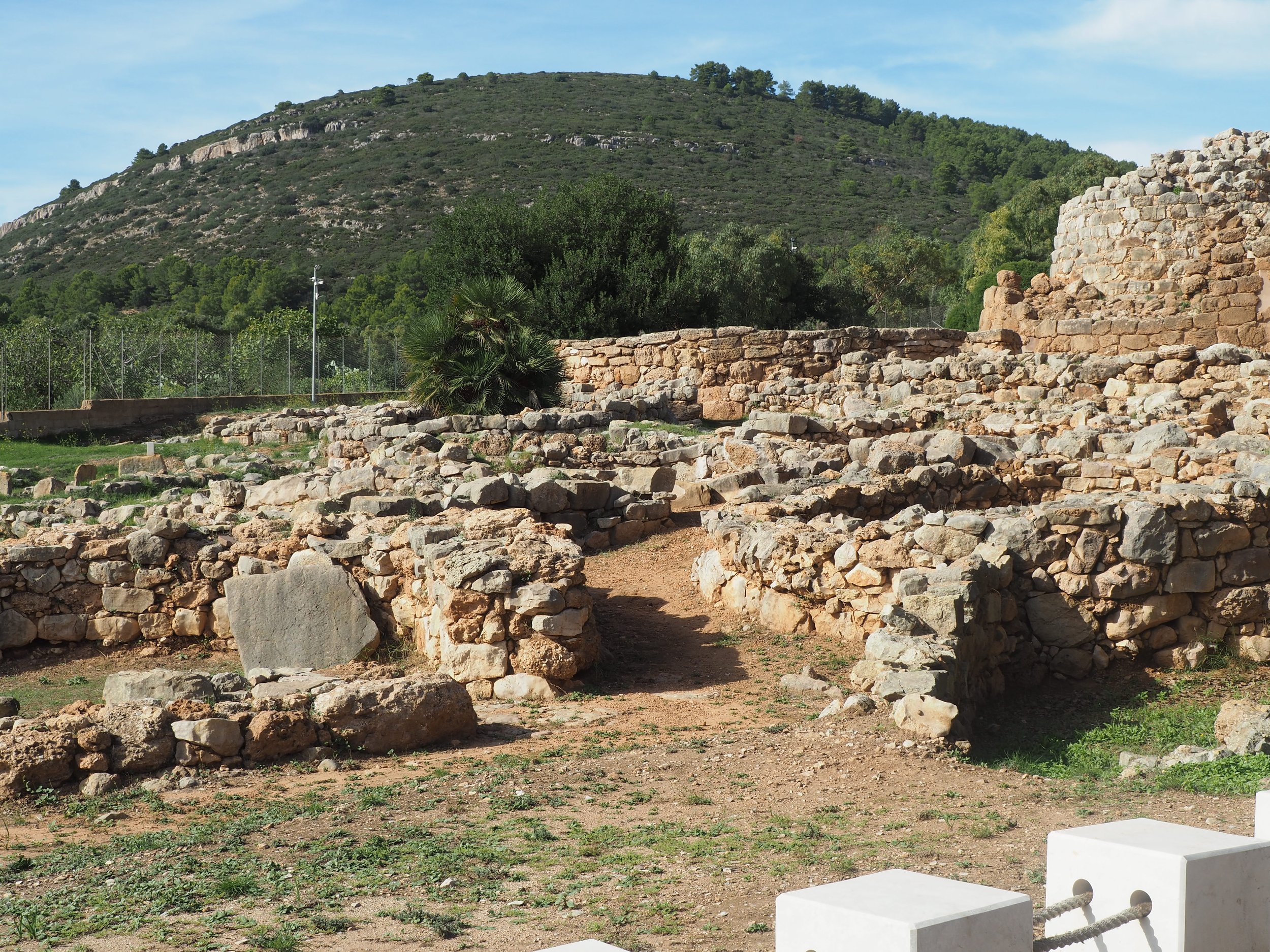









Inside the Nuraghe Palmavera
Necropolis of Anghelu Ruju
This is such a great site to visit! I love necropoli - the way that people treat the dead can tell us so much about how they see the world. This is a really neat necropolis because it has burials from many different eras, including the Beaker People! If you don’t know the Beaker People, take a read. They were all over the ancient world (and there is still debate as to if they were an actual culture or just a material culture that was spread amongst many different cultures) and it was wild to see them in Sardinia. There are pre-Nuragic burials, Nuragic, and others. You can really look into some of them (though most openings were too small to go into) and you have pretty much all the freedom to explore. There’s also winery right across from the site that is a great spot to enjoy a delicious Sardinian wine.



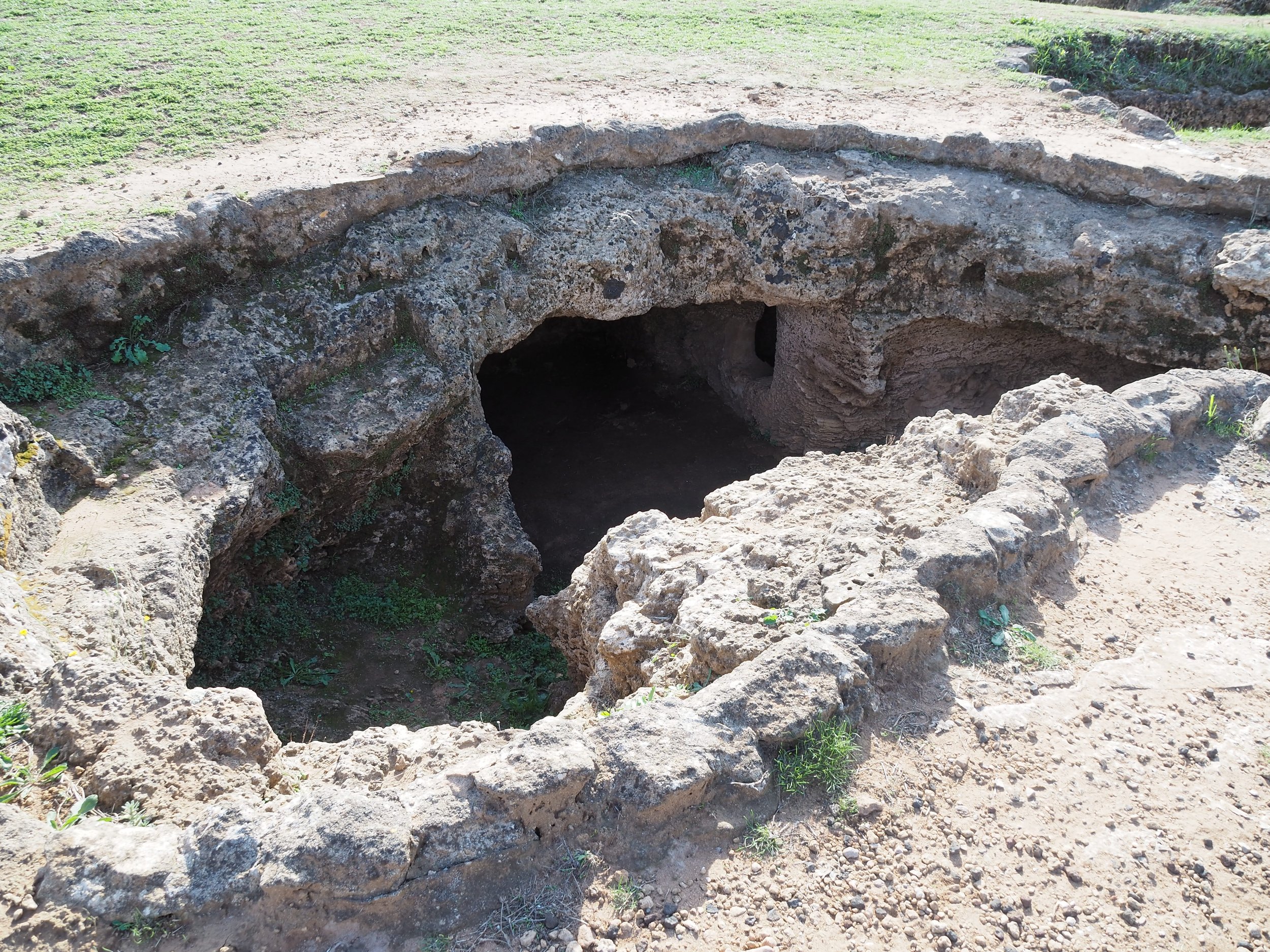














Nuragic Complex Romanzesu
This is another really interesting Nuragic Complex. It doesn’t have a Nuraghe but has a very cool and unique sacred well area. Instead of just the stairs down into the well, there appears to be a sacred pool on one end that then leads, through a series of chambers, to the sacred well. It suggests a different religious ceremony, maybe it was a special site, maybe it just shows that this particular group had a slightly different variation of the water-based religious ceremony. It is very cool. There is also an interesting building complex where there was apparently a bodiless burial. We recall from the Thracians that when a leader died in a place where their body could not be sent back, they would be ceremonially buried as a collection of important ceremonial objects. I can’t help but wonder if that was the case there (though that’s just my thought.)













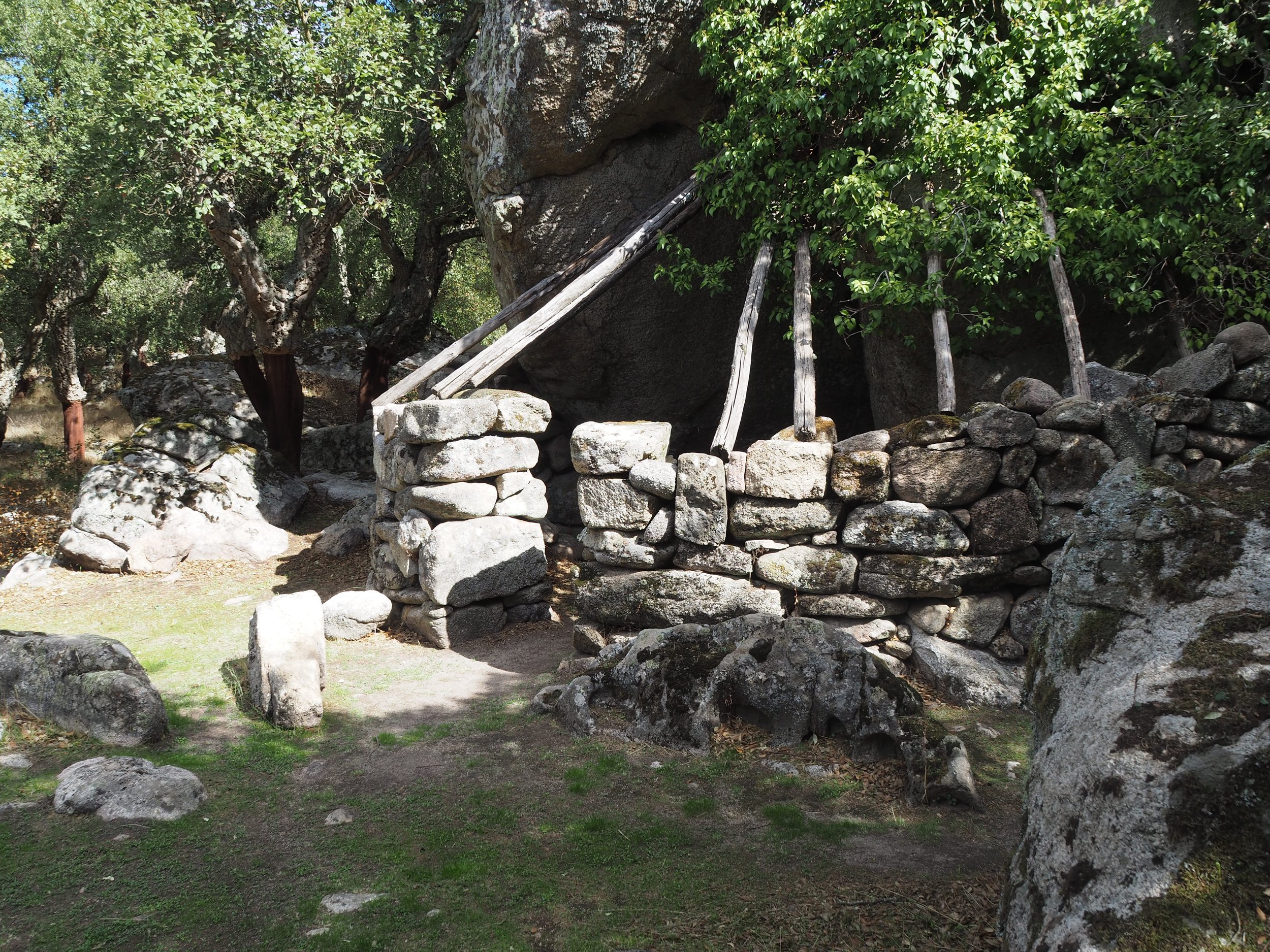
National Museum in Nuoro
This is a very small museum in the town of Nuoro. It has some really nice artifacts from the region (including a reproduction of one of the most interesting meeting-house structures that I’ll have more about in the two sections) and is worth a visit if you have a free half hour or so. Parking is a little tricky (there’s a parking area near the church) and it was hard to find a place that was open for lunch (hit up L' Aurora Caffetteria for a quick sandwich and their white wine which is Prosecco.)





Sorgente Su Gologone
First of all, don’t use Google Maps to get there. The parking lot is not where Google Maps will take you. Instead, navigate to Area di parcheggio per la Sorgente di Su Gologone. This is an easy walk, past a really cute old church, that a natural spring that has been an important water source for people since ancient times. You can still drink the incredibly clean spring water. It tastes great! The water is incredibly clear and there are some really neat fish in the river that it flows into.










Nuragic complex of Sa Sedda e Sos Carros
This one is pretty tricky to get to. You go up the road past Sorgente Su Gologone and follow that to where the road because a very uneven dirt road. Our rental car was pretty dirty after the drive. It’s actually a pretty neat drive, past some lovely views, and you come to the entrance building. You have to go up with a guide (the guide didn’t really speak English so gave us a very helpful English-language guide and basically let us wander at our own pace through the site once they opened up the site. But this is the location of this amazing meeting place. It’s unique, from what I can tell. Lead pipes lead water into channels inside the walls. The water would then shoot out of these rams’ head shaped openings and into the stone basin at the center of the room. It is just amazing!













The Meeting House
Orosei
Orosei is on the eastern coast of the island. It’s another pretty city with a really neat old section with some lovely architecture. We stayed at Hotel Gli Ulivi which has some incredible views. Parking was actually just past the hotel (the road has a no entry sign but you’re okay to sneak in the wrong way to get to the parking lot.) We had dinner at Ristorante Tipico La Taverna just in the heart of the town, which had excellent food. Before that we had drinks at this really cute bar - Central Bar Di Solinas Anna Maria. The staff there were super nice and of course, we got that great charcuterie. It’s a great little city and an excellent spot to stop on your way.

















Grotta del Bue Marino
From Orosei we drove down to Cala Gonone to hop on a boat to Grotta del Bue Marino. They only have tours a few times a day during the time we were there (early October,) so if you want to visit, be sure to check before you pick a boat to hire. We started by getting our tickets for the Grotta tour and then picked a random boat tour option and bought tickets. You can also get boat tickets that go to the Grotta and other sites further down the coast.
The Grotta is very cool. It’s a sea cave that was originally carved out by a river that pushed its way through the limestone. Over thousands of years, it ate away at the rock. Eventually, it broke through to the sea. Then the sea started to change the shape of the cave as well. Now you can go into the cave and see all the amazing formations. Tours are all guided and our guide was incredible. I learned more about cave formation from her than I had from any previous cave tour. There’s also some cool neolithic carvings at the entrance to the cave that indicate its use over the millenia.
Inside the Cave
















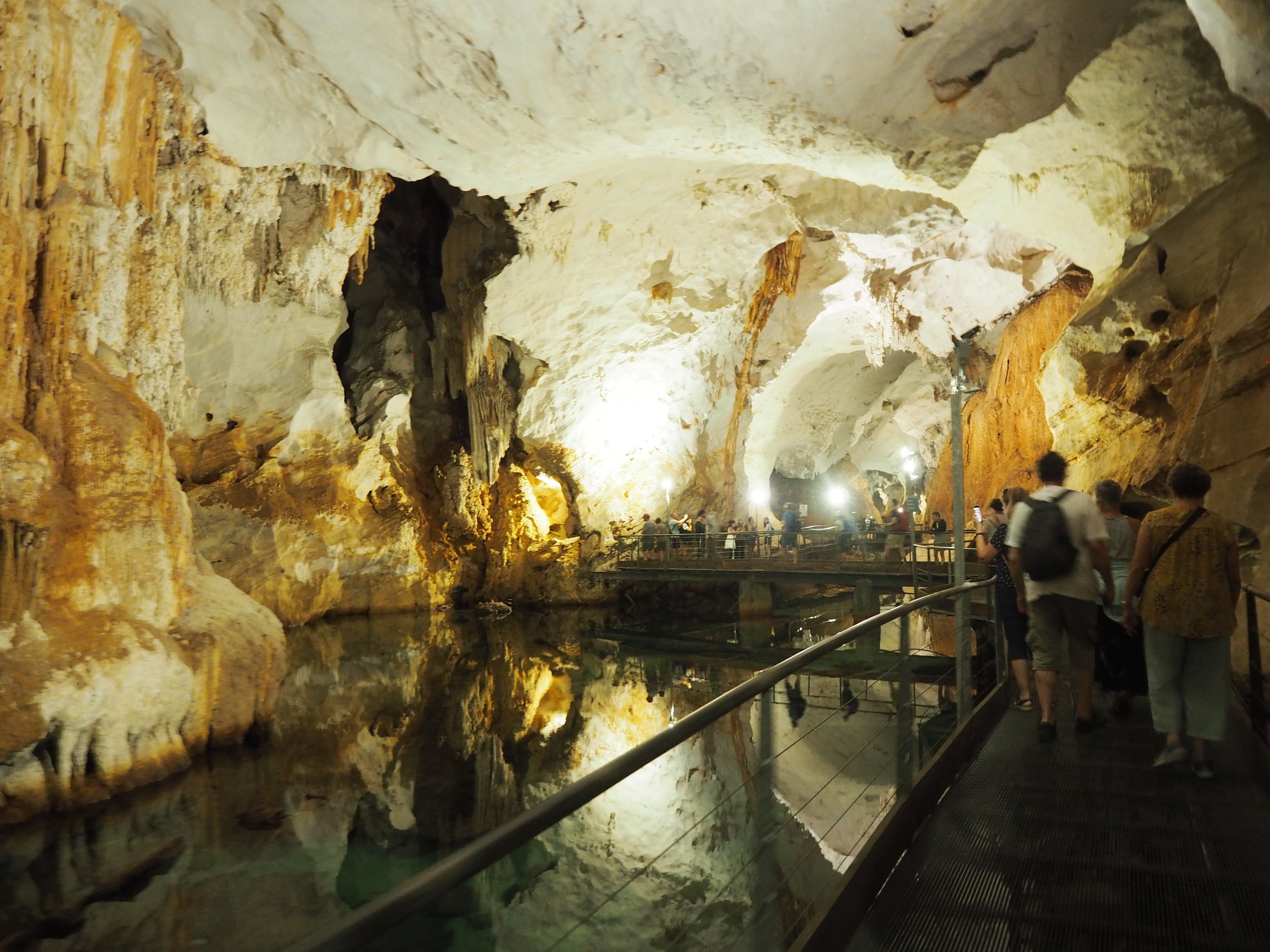
















Selinunte
Now on to Sicily! Our first visit on the island was to Selinunte archaeological park. This was a major Greek city and is very extensive. There’s an incredible restored Greek temple, an interesting acropolis area, and many other portions of the site that have the remains of dwellings, religious buildings, and commercial buildings. I highly recommend getting the ticket that covers the bus - it’s quite a large site and getting from the museum to the seaside portion of the site is a good 5 minutes by golf cart, so a long walk. The carts are very quick to grab and comfortable to ride.
The museum has some very good artifacts. The site was first settled around 650 BCE by the Greeks but then was conquered by the Carthaginians in 409 BCE, under whose control it remained until the Romans defeated Carthage in 250 BCE. The site really looks primarily Greek, with little evidence that the Romans significantly altered it, unlike some other sites in Sicily. The main features of the site are the Greek temples (including those to Hera, Malaphoros, Zeus, and Apollo, as well as a number that can’t be conclusively tied to any particular deity,) the acropolis and settlement, and the Agora. This is a really lovely site (with a nice cafe with some great gelato and an excellent view of the sea.) Easy to get to, easy parking, a truly memorable stop.











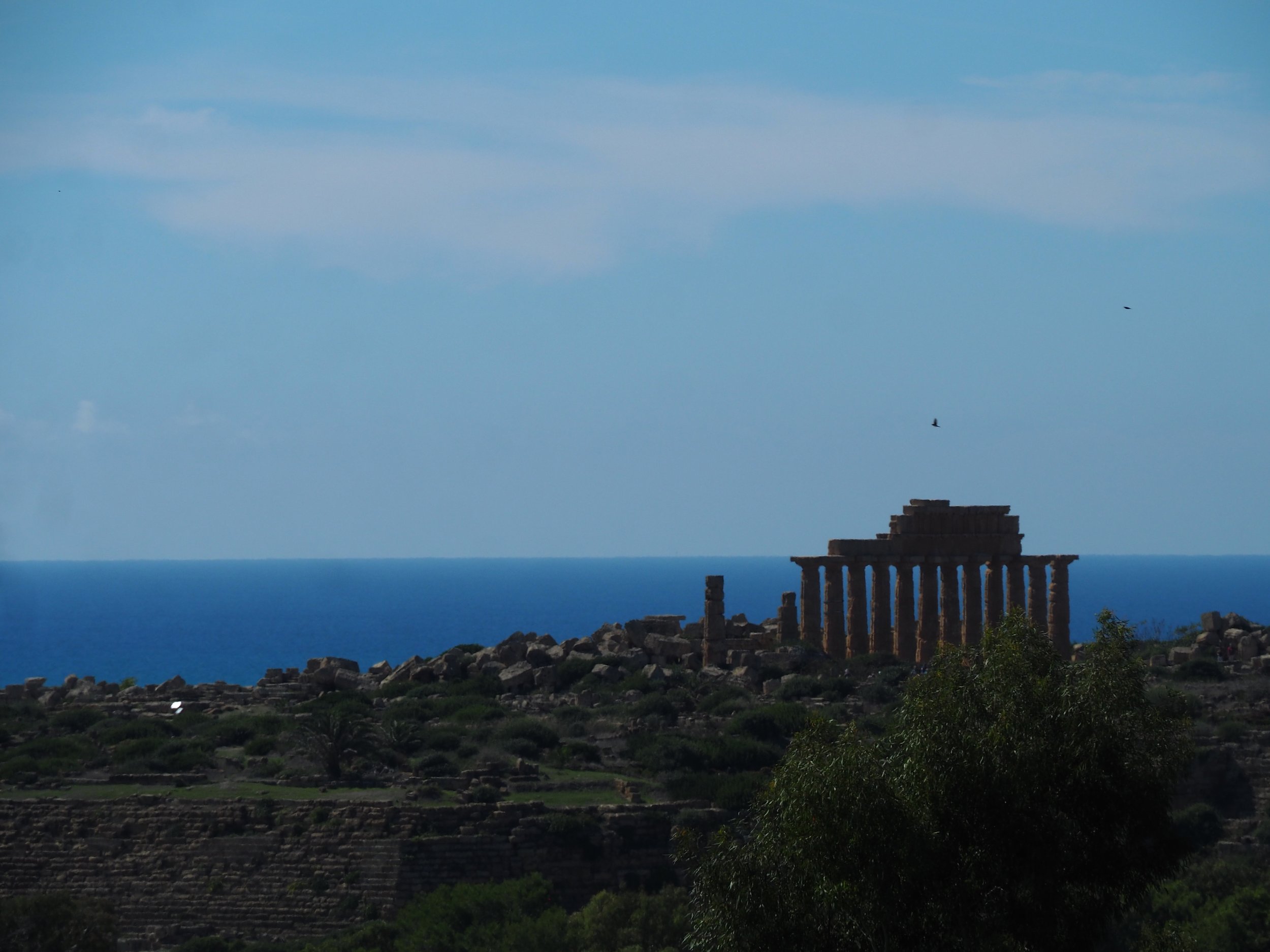
















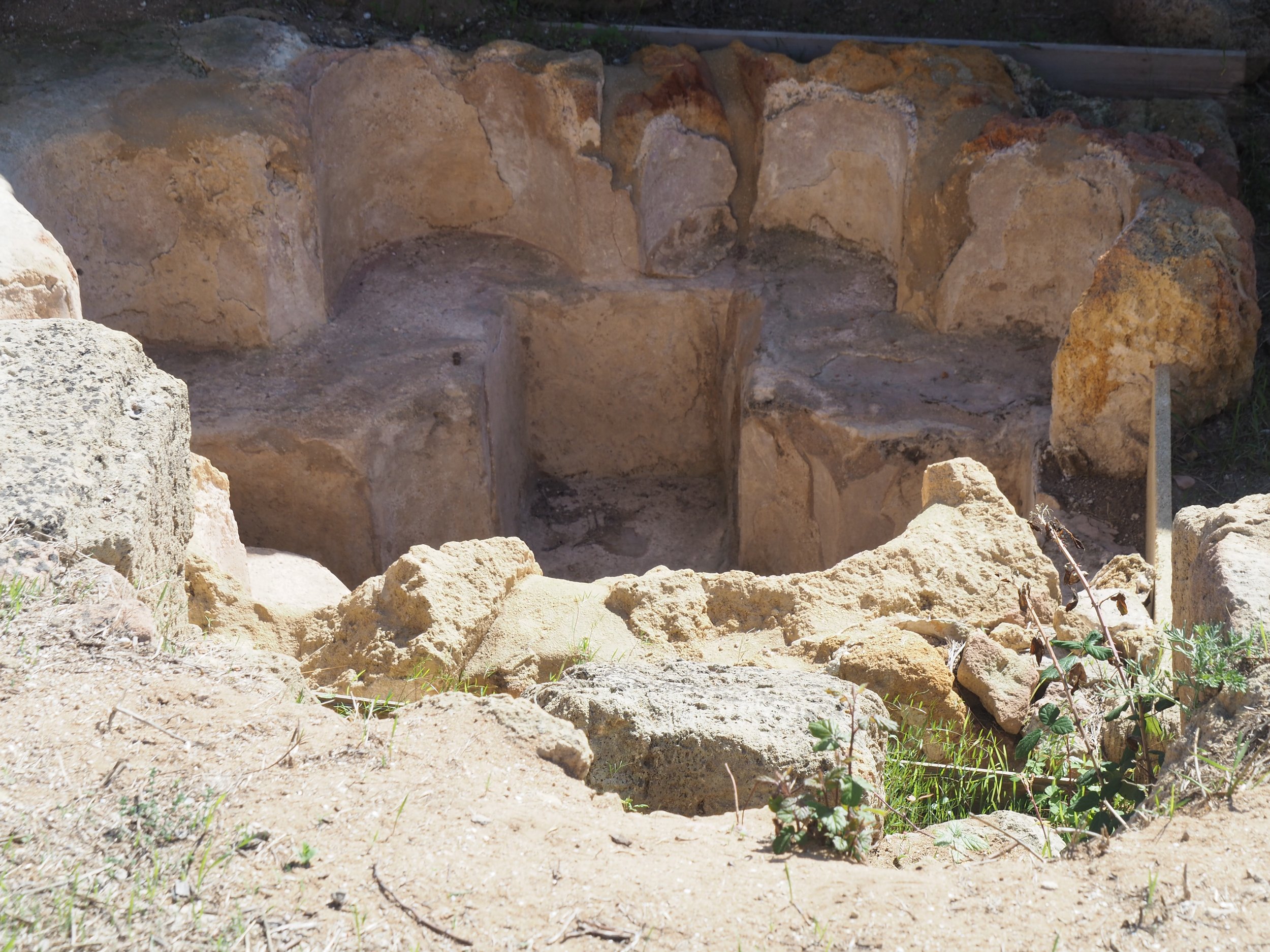







Segesta
Located west of Palermo and up in the hills, Segesta is another really interesting archaeological site. It was primarily Greek, but has the remains of late settlements including the (as yet) only discovered remains of a Mosque (although Sicily was under control of the Fatamid caliphate for a few centuries, but all the other mosques were destroyed after the Spanish gained control of the island.) It appears to have been originally founded by the Elymians who appear to have been an indigenous Sicilian population, though there is still a lot of debate about who exactly these original founders were and where they came from. They were then colonized by the Greeks (though many ancient accounts actually claim that Segesta was founded by Trojan refugees.) They are first mentioned when they were at war with Selinunte, then had a treaty with Athens (probably to assist in a different war with Selinunte), and they assisted the Carthaginians in their final defeat of Selinunte. They sided with the Carthaginians against the forces of Syracuse, but then sided with Rome over Carthage during the Punic Wars. This meant that they survived until Roman times, though the city was dwindling. There are later settlements including a Muslim settlement during the Fatamid rule, and a Norman castle. The city itself was fully abandoned in the 13th century CE.
There are a number of excellent things to see at this site. First - take the bus up to the acropolis at the top of the hill. You can see the well-preserved theater, the acropolis that include what would have been a massive, multi-floor shopping plaza, the remains of that mosque, the remains of the Norman castle, and a number of other really nice buildings. You can then either take the bus back down, or you can walk down. We walked down because we really wanted to visit the House of Navarca, which has some pretty lovely mosaics. We also wanted to visit the cave dwelling, which wasn’t really a cave dwelling but instead was a home built into the side of the hill. We then took the wrong path and wandered through steep, plant-filled terrain to get back toward the entrance to the site and the walk up to the magnificent temple. It’s probably better (and easier) to go back to the road and follow it down. The temple of course is a highlight and well-worth the fairly steep but short walk up.
























Mozia
Similar to Nora, Mozia was a major Phoenician settlement. What makes Mozia really interesting is that it basically was only Phoenician/Carthaginian. There has not been found any evidence of settlement before the Phoenicians settled there in 800 BCE. It is one of the oldest Phoenician sites in the regions (with some websites claiming it to be the oldest Phoenician settlement in the Mediterranean, though that is hard for me to track down.) It is located on a relatively small island about a 20-minute boat ride from the coast in the region of Marsala. The boat travels to the island on the half hour and back to the mainland on the hour. There used to be a walkway that connected the island to the mainland, but it has been destroyed over time. The water is so shallow, you probably could walk even in the water, but the boat ride is nice.
The island was purchased by a rich, Sicilian-English ornithologist who made his money off of Marsala wine. He noticed some interesting features on his island and performed a number of digs on the island over the years. His home has been transformed into a museum, which follows the “more is more” method of display. The museum houses the famous Motya Charioteer, which is stylistically unique though perhaps of Greek origin (or who knows, perhaps a Phoenician from Sicily who had studied sculpture from the Greeks?)
The island itself is bigger than it looks. It includes a number of really interesting features. First is the Kathon, an artificial water feature that connects to the sea. No one is really sure what its purpose is - it seems to small for an artificial harbor and too deep for religious rituals, though it is located adjacent to a number of religious buildings. There are also fortification walls, a necropolis, a tophet, temples (including those to Baal, Astarte, and Melqart-Herakles,) and the remains of that walkway to the mainland. This is on a island with active vineyards. It is really interesting to walk around, and is considered one of the key sites that really ignited interest in the Phoenicians.
Another cool aspect of the site is its proximity to salt flats. As we were coming back into town, we were able to see them mining the salt. You can even visit a salt museum and purchase your own, locally sourced salt.




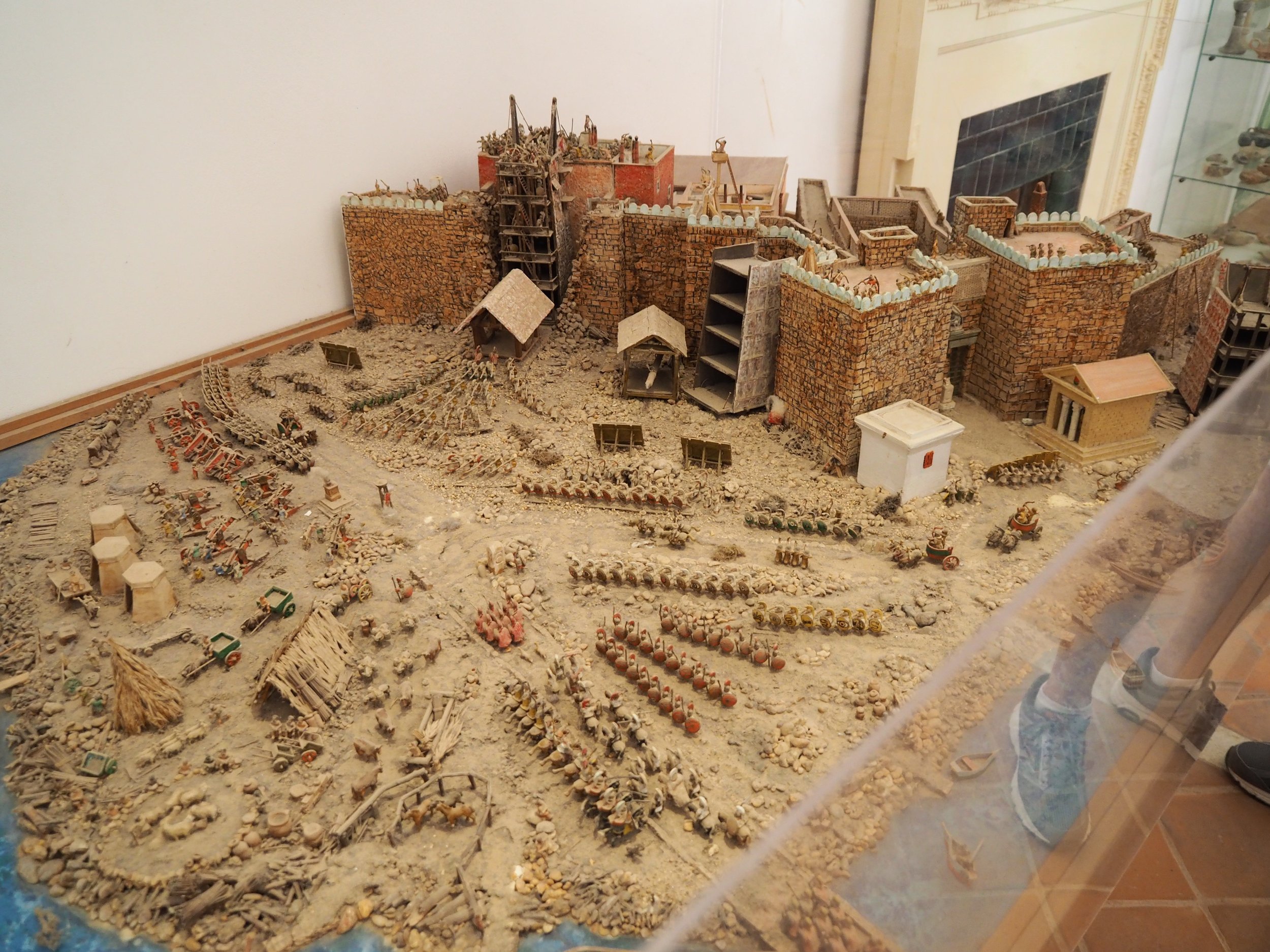

























Two Videos from Mozia
I am sharing two videos I took near the island of Mozia. One is of the salt-farming operations, and the other is of a very cheerful Egret who was fishing in the shallow waters.
Erice
Erice is adorable! It’s basically a Tuscan hill-town in Sicily, with amazing views of the sea. There are a number of cool buildings including some very nice churches. But it feel a lot like San Gimignano. There are two ways to get to the city - you can drive up some windy roads and park at the entrance to the city, or you can drive into nearby Trapani and take the cable car up to the base of the city. You can see from the below video which we chose!
Erice is really charming. It has the old cobblestone streets, cute cafes and restaurants, and some lovely churches. You can spend a couple of hours here and see almost everything. Just be careful as you walk - the streets can be a bit uneven. But it really is lovely and worth the visit.















Palermo
This is the capitol of Sicily and is a really cool city. It has a bad reputation, and has some less than great portions, but it is really worth a visit. It was originally a Phoenician city (though there is little left of that part of the city) but was extended and was a major city during many periods. Some of the more significant changes to the city happened under the Muslim rule of the city and then the later Norman rule. What’s really cool is that the city was so important during the Muslim rule that even after the city because Christian, there was still a huge Arabic-speaking population that had a major influence on the architecture of the city. There are parts (like the Cathedral) that wouldn’t look out of place in the former Moorish parts of Spain.















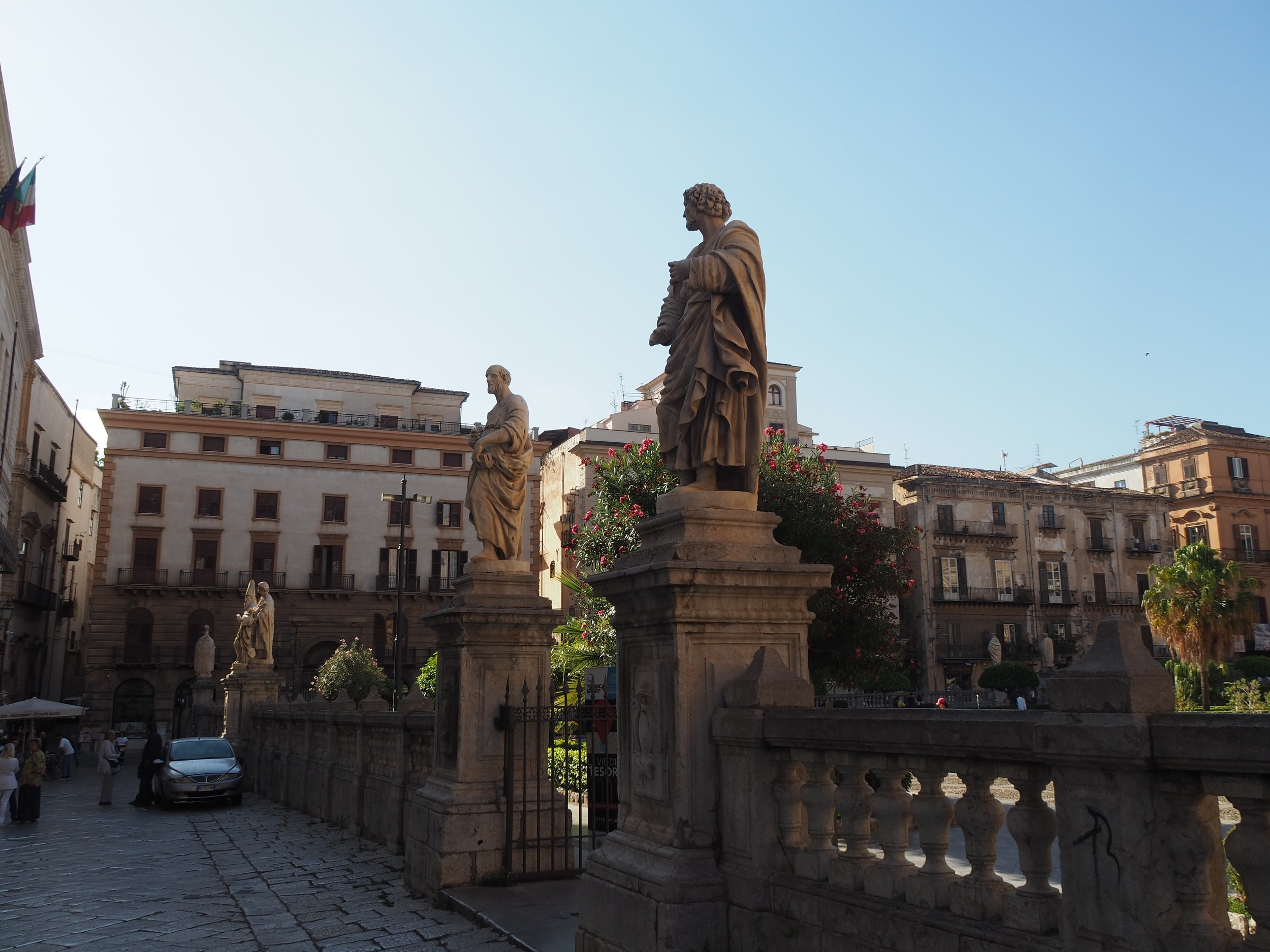








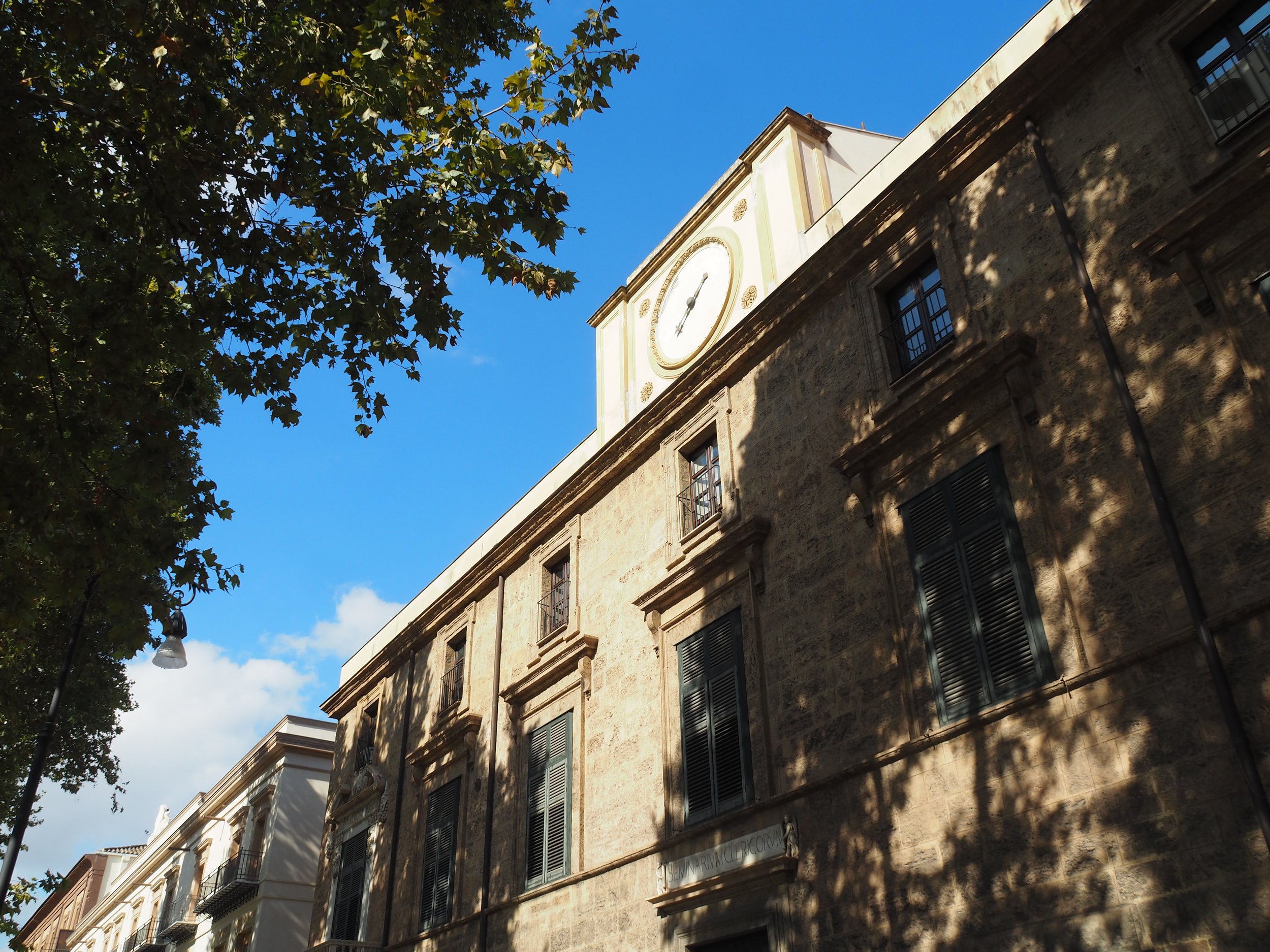







We had an excellent Tours By Locals guide (Bianca del Bello) who gave us an incredible and informative tour of the city. We started out at the opera house, which is the largest in Italy and one of the largest in Europe. Then we wandered over the open-air market and got to see all the amazing fresh fruit, fish, and street food on offer. We saw the puppets that are a part of an incredible artistic tradition that can trace its lineage back to Eleanor of Aquitaine and the troubadours and their stories of the crusades.
Then we visited the Cathedral, which is wild! It was built at so many different times with different styles and artistic influences and it looks like no other cathedral I’ve ever seen. The inside is more uniform, though quite lovely with some fantastic architecture and art.
We then went to the Norman castle, which is still used by the government of Sicily for their meetings. It’s an incredible building and it has some of the best mosaics from that time. It has the famous Capella Palentina that is famous for its amazing style. It is dripping with gold-coated tiles and fantastic scenes from the bible. But the ceiling is covered in Muslim-inspired scenes and phrases in Arabic. Absolutely stunning. It is important to time your visit because it’s hugely popular and tour groups will absolutely fill the space.
We then saw more of the palace, with some more great mosaics. There’s the tower that leads to another area with animal and plant mosaics, including the most judgmental leopards you will ever see. It’s quite interesting and has some beautiful art.
From there we wandered through more of the city, including some other really cool churches. We finished at the Four Quarters which has some really impressive statues. In all, Palermo is really worth the visit.









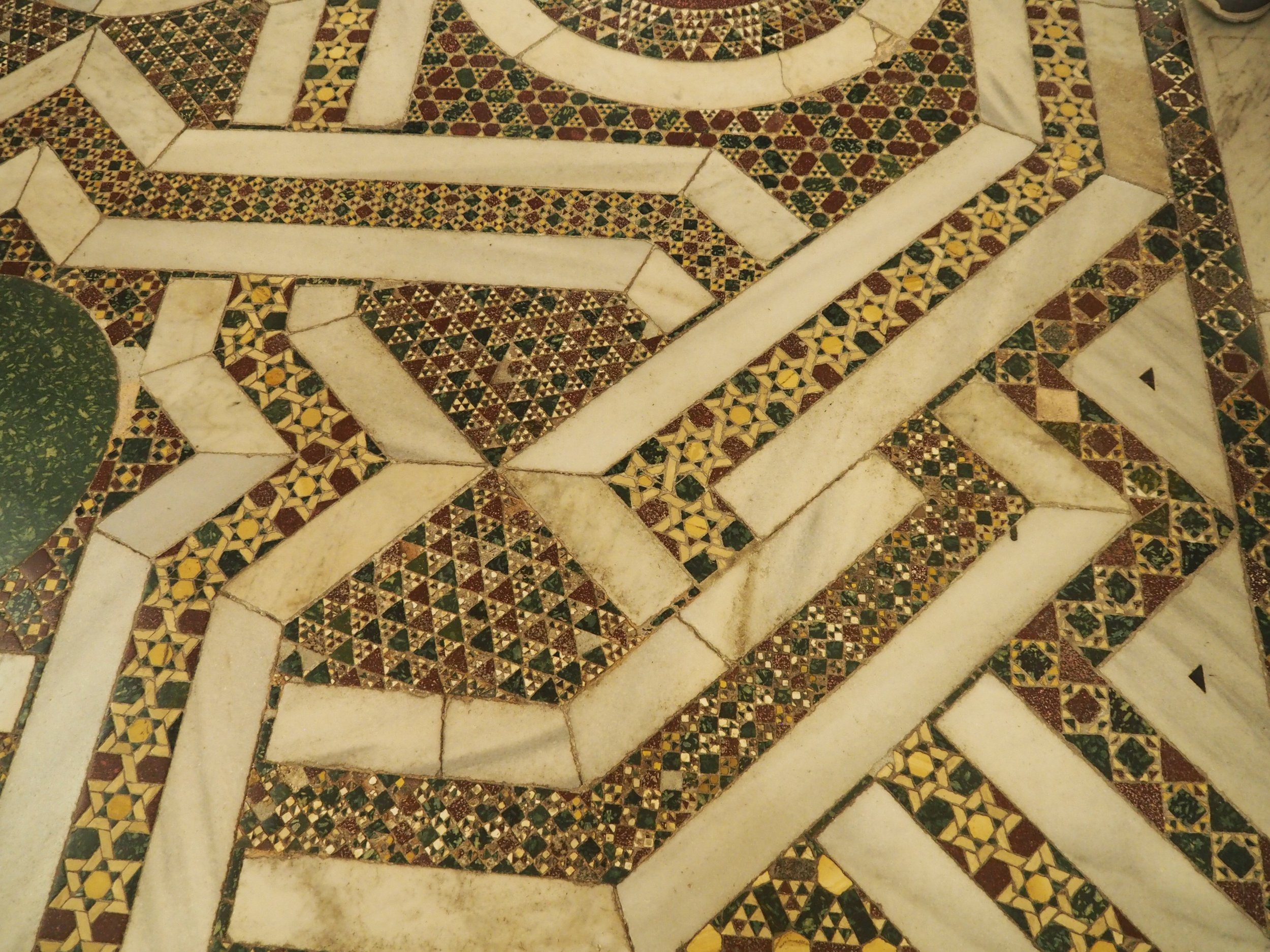




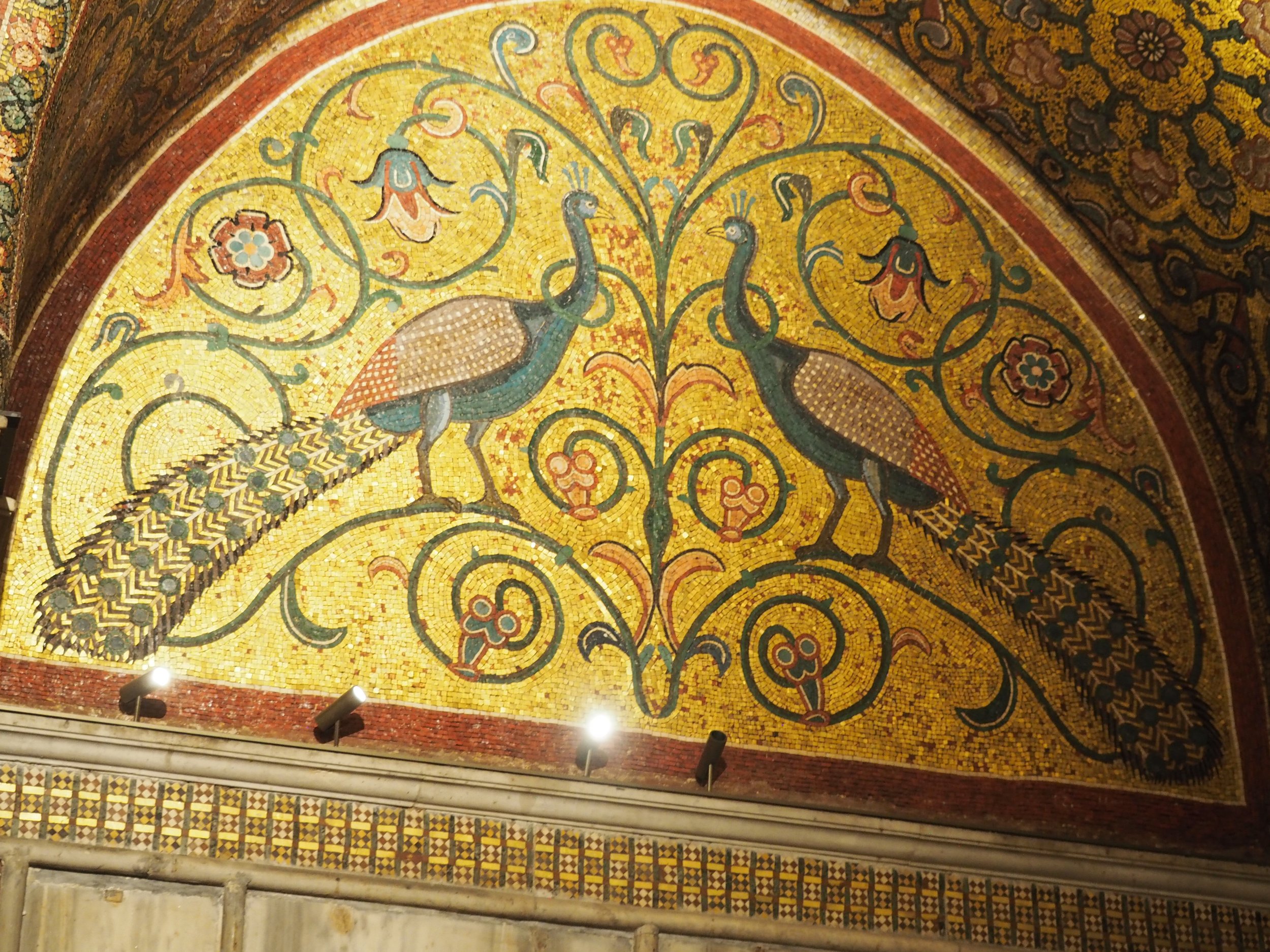
















Cathedral of Monreale
This cathedral is a short drive from Palermo and was out last visit on the trip. It’s lovely and is like an expanded version of the Cappella Palentina. It has more incredible mosaics and some great stone work. The town has a lovely view of the countryside. There is an easy parking lot down some stairs that lead you up to the pedestrian part of the town, then it’s a quick walk to the cathedral. Once again, it can get really crowded with tour groups, so watch your timing!



































